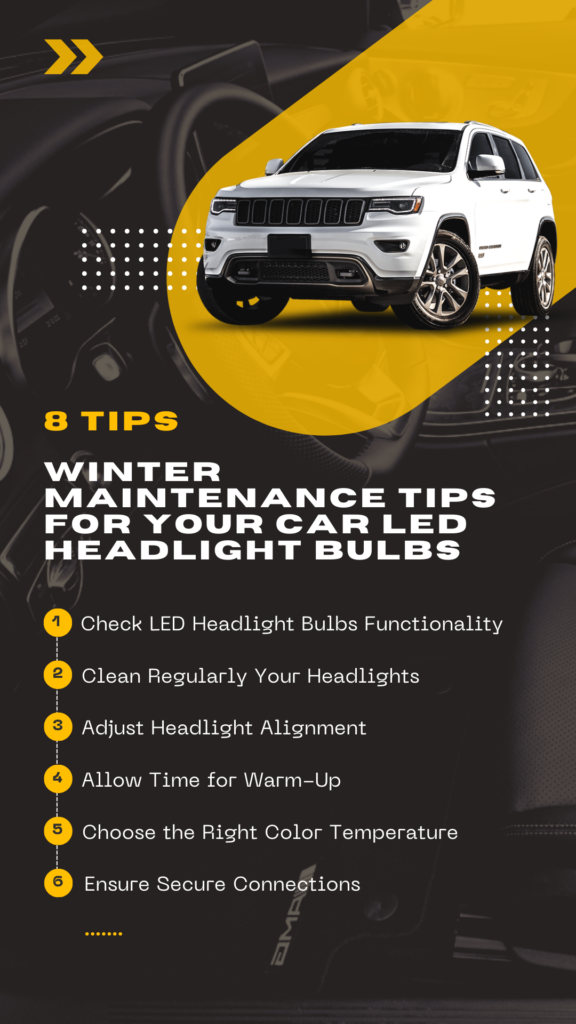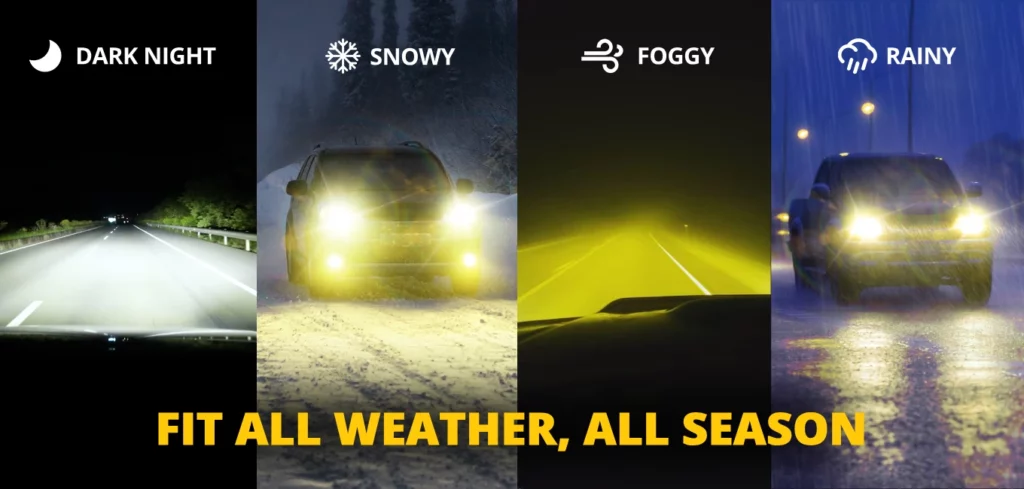
Why Are LED Headlight Bulbs Important in Winter?
Are you prepared for driving in the winter season? As winter rolls in, the days become shorter and the weather can turn unpredictable. One of the key aspects of safe winter driving is ensuring your car’s LED headlight bulbs are in top condition. Proper lighting is crucial for visibility during snow, fog, and icy conditions. Here’s what to keep in mind regarding your LED headlights in winter.
Table of Contents
Tip #1: Check LED Headlight Bulbs Functionality
Before the first winter storm hits, conduct a thorough check of your headlights. Make sure both low and high beams are working properly. If any bulbs are dim or not functioning, replace them immediately. This simple step can significantly enhance your visibility on dark, snowy roads.
Tip #2: Clean Regularly Your Headlights
During winter, roads are often covered in salt, dirt, and snow, which can quickly accumulate on your car’s headlights. Regularly cleaning your LED headlight bulbs will not only improve visibility but also extend the lifespan of the bulbs. Use a soft cloth and a gentle cleaner to remove any debris.
Tip #3: Adjust Headlight Alignment
Cold weather can impact your car’s suspension and, consequently, the alignment of your headlights. Misaligned headlights can reduce your visibility and may blind oncoming drivers. After navigating rough winter roads, check the alignment of your headlights. If they seem off, have them adjusted by a professional to ensure they are aimed correctly.
Tip #4: Allow Time for Warm-Up
LED headlights are more resilient in cold weather compared to traditional halogen bulbs. However, if your vehicle has been parked outside in freezing temperatures, allow your headlights a moment to warm up when turned on. This ensures they reach optimal brightness quickly, providing better visibility as you start your journey.
Tip #5: Choose the Right Color Temperature
LED bulbs come in various color temperatures, typically measured in Kelvin (K). While cooler lights (6000K to 6500K) may seem appealing, warmer temperatures (3000K to 4300K) can be more effective in winter conditions. Warmer lights are better at penetrating fog and snow, improving your overall visibility on the road.
Tip #6: Ensure Secure Connections
Cold temperatures can affect the electrical connections of your headlights. Regularly check the wiring and connections to ensure they are secure and free from corrosion. A loose or corroded connection can lead to flickering lights or complete failure, putting you at risk during nighttime driving.
Tip #7: Inspect for Damage
Winter conditions can be harsh on your car’s exterior, including the headlights. Before the start of the season, inspect your LED headlight bulbs for any signs of damage, such as cracks or moisture buildup. If you notice any issues, it’s best to replace the bulbs to ensure optimal performance.
Tip #8: Carry Spare Bulbs
It’s always a good idea to carry a set of spare LED headlight bulbs in your car during winter. In case one of the bulbs burns out unexpectedly, you can quickly replace it and continue driving safely. Make sure to store the spare bulbs in a safe and dry place to prevent any damage.
Winter BEST LED Headlight Bulbs for Winter Ride! ❄️
Boslla Chameleon 100W 3 Colors Series: Range of Driving Environments and Conditions! (❄️⛈️🌫️☀️)

This color-changing LED bulb features a 6500k 4300k 3000k three-color design where you can manually switch between white and yellow based on driving conditions. Whether you driving in snowy, rainy, or foggy, you can switch the bulb to the most suitable color temperature at any time to ensure a clear view of the road and driving safety! Embrace the season with confidence, knowing you’re prepared for whatever winter throws your way! Stay safe and happy driving!

